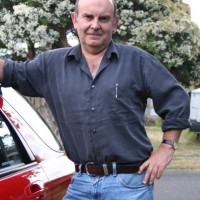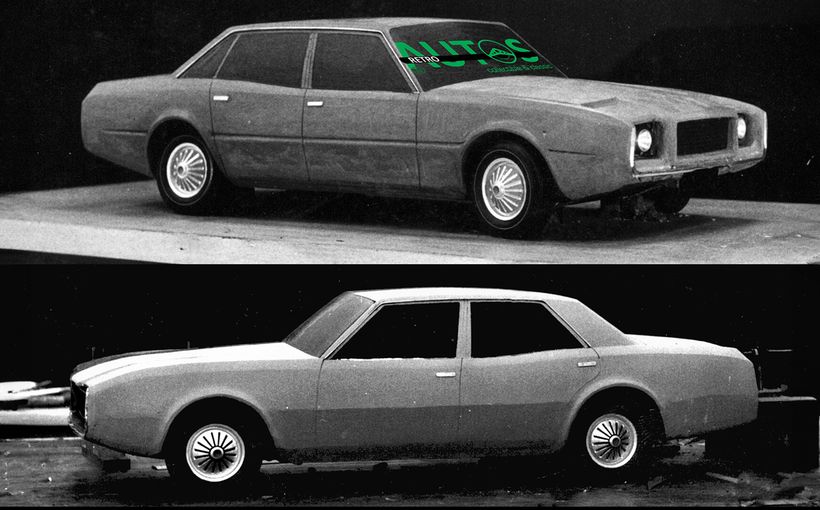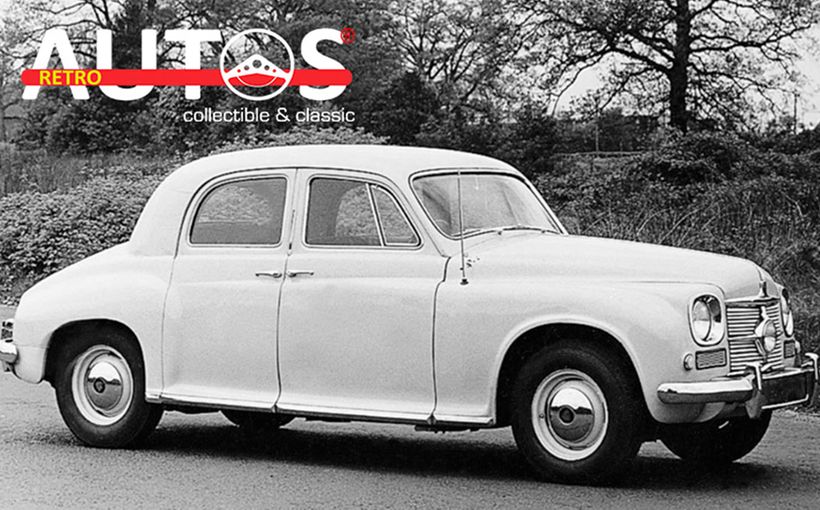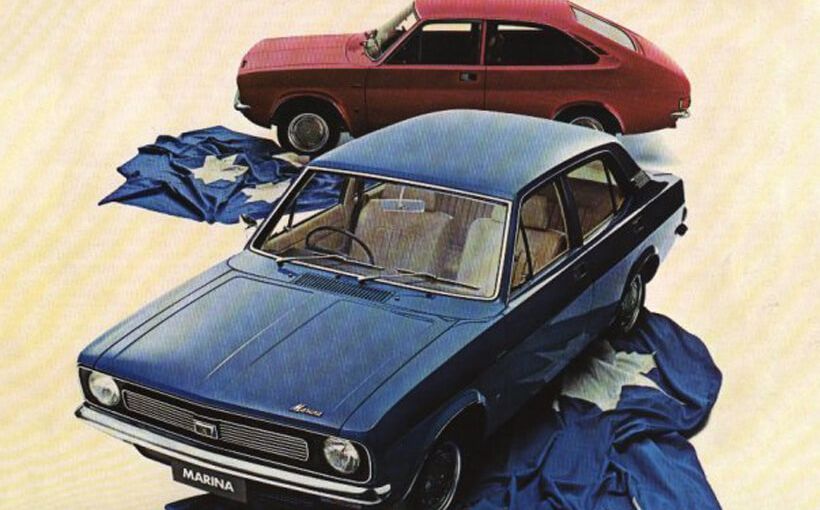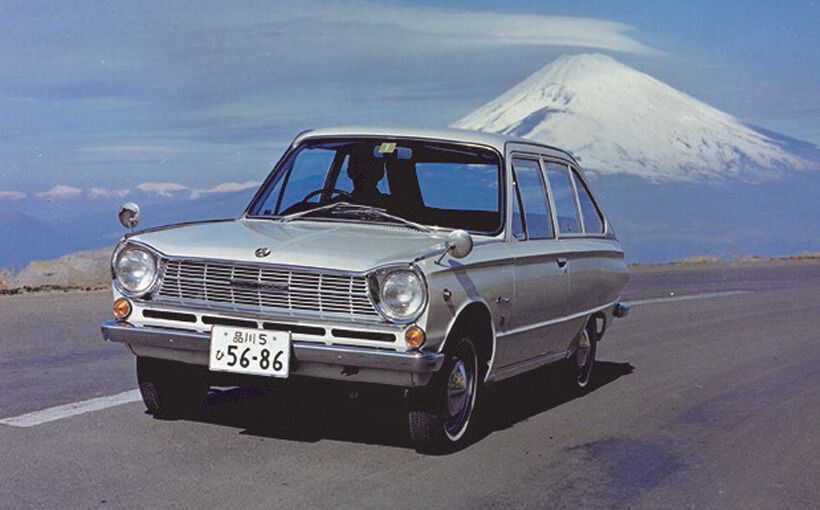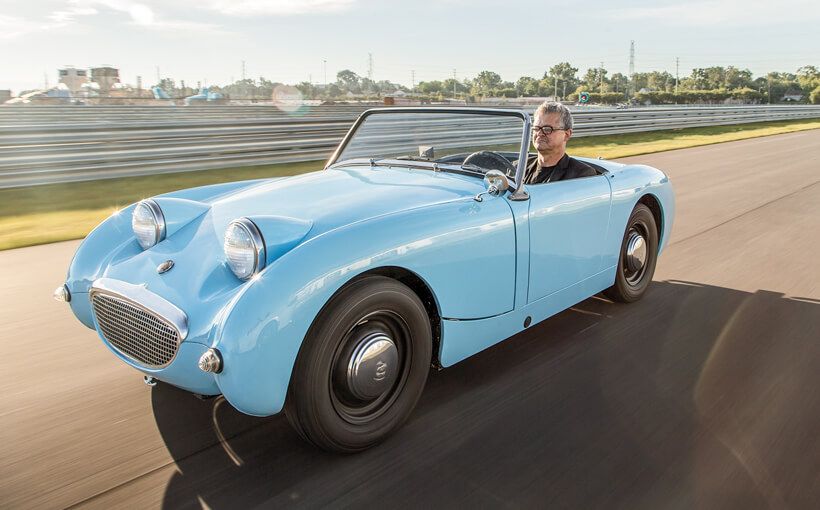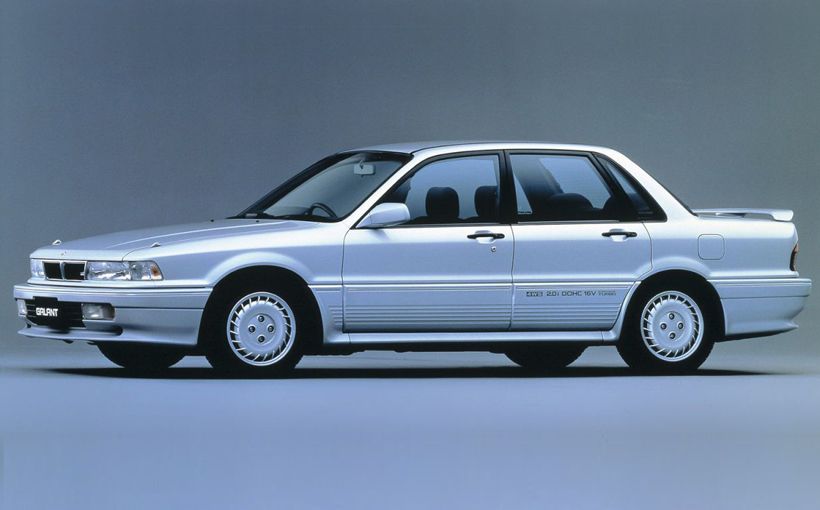1976-86 Rover 3500 SD1: The P76 that Australia Should Have Built

On its launch on June 30, 1976, the new Rover 3500 SD1 was globally acclaimed as the way of the future. Its refined simplicity shamed far more complex rivals at a fraction of the price and struck a chord with a world weary of complication that didn’t deliver. Despite huge waiting lists that took several years to satisfy, the SD1 exited the market a decade later as one of the most despised and derided models in the history of the car.
Its sales of around 300,000 over 10 years were appalling given the number of four and six cylinder variations rushed into production, including a diesel. A brand new factory commissioned to build it had to be abandoned within five years, not through lack of demand but because its culture had made it unworkable.
The initial excitement was genuine and not just hype for the new model. It won the European Car of the Year Award in 1977, the first for a Leyland brand since the more adventurous Austin 1800’s award in 1964. And even though it wouldn’t be released in Australia until December 1978, it didn’t stop Peter Wherrett at the end of a Torque series from nominating it as the direction for future family cars in Australia.

Wherrett’s prediction proved to be on the money as the entire Australian industry remained true to the simple but refined Rover SD1 mechanical approach. The five door long tail or bustle back hatch became the premium body choice for everything from a Toyota Corolla Seca/Corona/Camry, Mazda 626, Ford Telstar, Mitsubishi Galant and the top Nissan Skylines. After defining the roots of this liftback design, Renault would later merge the practicality of the original R16 with the style of the SD1 in its Fuego and 25 models.

The new Rover also seemed to share its new fastback body outline with the new Citroen CX and Lancia Beta sedans except without liftbacks, neither could ever match the flexibility and luggage capacity of the new Rover. Today’s biggest selling passenger cars are not too far removed from this same flexibility and cabin capacity as the SD1’s primary focus in European markets was the four cylinder and diesel models.

Mel Nichols on filing his August 1976 Wheels report from the UK on the SD1’s release observed: “At this juncture, I think I’d rate the Rover well above the Volvo 264, above the Ford Granada and perhaps even the BMW 528, on the same level with the Renault 30 and just a little behind the Citroen CX2200, even though the British car has a lot more performance, crisper handling and a tailgate. It isn’t as good as Peugeot 604 – but then the Jaguar is hunting in that territory, isn’t it?”

The mastery of the David Bache SD1 work was to step away from the bland aero front of the 1967 Pininfarina study and look to Italian supercars for inspiration. Note the Austin 1800 wheels and trims, familiar to generations of Australians. The Rover is an early Series I Australian delivery with the emissions carburettor engine.and early closed front section. (Photo from curbsideclassic.com and aussieoldparkedcars.blogspot.com)
More importantly, as Peter Wherrett identified, it was the most advanced interpretation of the formula that already defined the Australian car. It previewed the tighter dimensions, detailed aerodynamic improvements, more sophisticated suspension tuning and user-friendly cabins that would define a new generation of Australian family cars that started arriving in 1978.
Mel Nichols noted at the time that Holden’s new engineering team under Chuck Chapman needed to take note of where the new arrival had moved the bar for Australian cars. Ford Australia went one better and became the first to import a Rover SD1 several years before its official local launch in December 1978.
So what went so terribly wrong?

The SD1 Rationale
The thinking behind the new Rover was unusually clear and rational for British Leyland. Because the motivation was all wrong, it would prove a recipe for disaster. For a short time, the British public who were funding this automotive black hole could dare to hope that BL actually might deliver cars that buyers wanted to buy and deliver a return on investment.
The train wreck that would ultimately demolish the SD1 and the proud Rover name left the station in 1966 after the bullish, cashed-up Leyland trucking group purchased Rover with its recently acquired Alvis division. Merging Rover development costs with recently acquired Triumph and absorbing the various Alvis military contracts into Leyland made sense to a group of truckies but only because they didn’t look too closely at the cultures within each company.
Rover’s fortunes then faced the next level of disaster after Leyland merged with BMC (British Motor Corporation) in 1968 which had only recently formed alliances with Jaguar-Daimler. All were building dated designs that cost far too much to build. Even the recently released and highly acclaimed Jaguar XJ6 was more dependent on cottage industry practice (and low labour costs) than modern manufacturing.
Within two years, Rover suddenly found itself enmeshed with Triumph and Jaguar inside an unwieldy and highly political Leyland hierarchy. Each plan or strategy for this premium internal division was a product of egos and competing spheres of influence, and all too rarely had anything to do with what was best for Leyland, the British taxpayer or each brand’s capabilities and strengths.
Leyland’s toxic environment dictated that protecting your brand’s turf became more important than delivering the right product.
As an engineering-led company with a stable work force and a reputation for quality, Rover was the most successful of the three premium brands, especially with the new Range Rover about to come on stream. Rover was seen as a serious internal threat by Jaguar management. Yet Rover’s can-do engineering-led management team were no match for the wily Lyons boys in the board room.
After Rover revived its ageing Rover P5 with the Buick V8, its British middle-order luxury car competition had been dispatched to oblivion (Humber, Armstrong-Siddeley, Alvis, Wolseley/Riley, Austin Westminster/Van den Plas Princess R). Unopposed, Rover owned the senior government, fleet and private limousine market by 1968 with the superb Rover P5B 3.5-litre sedan/hardtop range. The P5 was Rover’s core business and the success of the smaller Rover P6/P6B 2000/3500 range was an unexpected bonus.
The ageing P5B (it started life as the 1958 3-litre) disappeared in 1973 without a replacement after its P8 successor was tooled-up and ready for production. The P8 was dropped and the millions of pounds lost had to be replaced by the British taxpayer.
Because the Jaguar faction saw the P8 as a threat to the XJ6 and funding for final crash testing was witheld, Rover, British Leyland and the entire British nation were left without an entry in this rapidly expanding segment. As new Mercedes-Benz S-class and BMW 3.3/7-series models were advancing to cater for a more affluent world, the Rover P8 designated to get there first and meet them head-on was totally abandoned!
Despite a rushed wheelbase stretch, the XJ6 was always a cramped sports sedan, never a middle-order limousine. As a sports sedan, it already enjoyed an unopposed market niche and long waiting lists, proving it could co-exist with the equally successful Rover P5B. Even if an XJ6L could cover the missing P8, which it couldn’t, Jaguar’s antiquated build practices could never take up the slack left by the P5B anyway, let alone make money.
Imagine an HQ Monaro GTS 4 door faction within Holden talking the board into dropping the HQ Premier and Statesman so it wouldn’t take Monaro sales and you get a sense of the bastardry at Leyland management level. Rover’s Solihull workforce was skilled, loyal and smart enough to know they had been shafted by politics, not good management. The seeds for total assembly line anarchy which helped destroy the SD1 had been sown here.
The P8 was also complete enough to be handed over to Leyland Australia for local development and an early 1970s release. At least someone was thinking partly along these lines as the P8’s 4.4-litre V8 was handed over to the P76 team but that was as far as the co-operation extended.

After Rover lost its core P5B hero model range, BL management then pitched Rover and Triumph against each other to develop a single replacement for the Triumph 2000/2500 and the Rover P6 2000/3500 ranges. This marked another level of unbelievable corporate stupidity. The Rover proposal already had to plug the market and assembly line gap left by its lost P8 large car. It now had to also replace the outgoing Rover P6 and Triumph 2000/2500 compacts at entry level while skirting hostile Triumph and Jaguar factions.
There was plenty of space for Triumph to develop its own brand new compact Triumph range to replace its obsolete Dolomite lash-up (a rear drive conversion of a defunct front drive model) and the ageing but successful Triumph 2000 as well as the four cylinder Rover P6 models.
This was all occurring in the 1969-70 period, the same time that Leyland Australia planners were in the UK negotiating their X6 Tasman/Kimberley replacement that would later become the P76. Instead of sending another big wad of British taxpayer cash into an Australian black hole, it defies belief that Australian needs and contributions were not factored into these discussions.

After the P8 was lost, the next Rover proposal had to be brilliant and it was. It won the right to proceed after predictably annihilating Triumph’s patchy Michelotti-prepared proposals which highlighted the gulf in abilities between Rover and Triumph. It proved the worst thing that could ever happen to Rover.
By the time BL management realized that Triumph really did need a combined Dolomite/ 2000/2500 replacement to join the new Rover for a more upmarket British interpretation of the Kingswood and Torana ranges, British Leyland went bust and was nationalized in 1975.
The new cut-above Rover 3500 V8 model, on track for a late 1975 release, had already been re-named Special Development One (SD1). After starting life as RT1, for Rover-Triumph, it was sensibly going to be a Rover again. That was about to change again, only worse.

Was it a Triumph or a Rover?
Under nationalization, the new Rover had to cover all the lost Triumphs, not just the sixes. The V8 model was immediately starved of valuable development resources diverted to produce 2000, 2300 and 2600 versions. The Rover conceived as a premium mid-sized V8 model suddenly had to become a cost-cut four and six cylinder Triumph replacement.
This led to a new round of downstream problems as the Rover was much bigger and heavier than a Cortina/Granada or an Opel Rekord/Commodore which it would now have to compete against as a four and a six. It also destroyed what was left of any pride, ownership and ambitions that Rover management and workers may have held towards the car.
In Australian terms, it was the same as telling the Holden HQ team that there would be no LH Torana and a four cylinder version of the HQ (the same size as the SD1) stripped of its weight, quality and toughness would be sold instead. Even though the VC/VH Commodore was smaller and started life as a four, the same strategy of reducing the Commodore to a four sent Holden broke as quickly as it did British Leyland.
As an aspirational Rover model, the SD1 was further compromised after Leyland’s ex-Ford cost-cutters savaged it and simplified its build before release ready for its new high volume, low rent entry level role. This process impacted on component suppliers who could no longer meet their own internal quality standards (Firestone tyres and Ford Explorer anyone?).

Even if this enabled the 3500 version to reach the market at an unbelievably low price, the quality shortfalls did not belong in a Rover and soon demonstrated that a bad car was not cheap at any price.
The even crazier part to this story was that Leyland Australia was already well down the track in developing a near identical smaller four and six cylinder P82 range styled by Michelotti with strong Triumph DNA. Capable of plugging this gap outside Australia as an export Triumph, the P82 was dropped and Triumph was left to attach badges to Hondas.

The V8 Withers
British Leyland had access to a flood of duplicate 1800-2000cc inline four cylinder engines (BMC E-series, BMC B-series, Triumph-Saab 2-litre, Rover 2000/2200) and an equally bewildering choice of small sixes (Triumph 2000/2500, BMC E-series, BMC MGC 3-litre, Jaguar 2.8) and two small V8s (2.5-litre Daimler, 3-litre Triumph Stag). Yet not one of them was good enough to power the new Rover.
As Leyland raced to develop the new O-series 2-litre four (a good engine shared with later Marinas which didn’t help the SD1 image),Triumph engineers then worked around the clock to upgrade their pushrod six into 2300/2600 SOHC sixes (potentially good engines introduced before both were ready). The hero SD1’s core 3500 V8 engine was left unchanged for 10 years bringing vital US exports to an early end.
Apart from the basic fuel-injected US emissions V8 which Australia inherited after it was withdrawn in the US, the only variation from the 1976 original twin-carb V8 in a decade was the Vitesse EFI engine that underpinned the race program at the end of the SD1 model life. This only happened as a part of a wider engineering program to prepare the Range Rover cash cow for US exports (by 1986 only the Range Rover was keeping what was left of BL afloat and the Australian switch to unleaded fuel in 1986 forced BL to re-engineer the Range Rover’s V8 for both markets).
To build all the new SD1 variations, a new Solihull factory filled with untrained outside labour removed the last vestiges of Rover pride and quality. It was run by BL management now driving these workers to ignore quality and achieve quantity to fund the obsolete ex-BMC replacements.
Before the Range Rover was re-engineered for US exports, the Rover SD1 was all that stood between the former BMC arm including Jaguar and collapse. As the tide of resentment was taken out on the SD1 and led to a culture so toxic, the entire new Solihull works had to be scrapped within five years. Rover production was then moved elsewhere and became just another Leyland.
Stories abound of workers striking to get paid for the time it took to get into and out of their overalls or because they didn’t like the colour of their work gear. This writer, while sharing premises in the UK during 1976-77 with Leyland mechanics and factory workers, was told of assembly line competitions to conceal a drink bottle or can in the most obscure SD1 location to create the most irritating noise that would be the hardest to rectify when it hit the road.
This left their dealer mechanic housemates rectifying what amounted to criminal sabotage during this period at tax payer cost. Yet even this was far less than the rectification that BL management was generating, albeit at a far more sophisticated level. Because no one’s hands were clean enough to end this impasse, the quality problems generated by management and assembly line bastardry, both flipsides of the same coin, would haunt the SD1 until the end.

Why the SD1 Should Have Been the P76
The dimensions of the Rover SD1 which shadowed local Holdens and Falcons were no coincidence as former Ford management were exercising the power of veto over the specification and proportions of any new Leyland model.
The Falcon’s long nose, short tail proportions were there, hidden by the Rover’s fastback roofline and the sleek nose. The dimensions and footprint are so close to those of a US Falcon, the Rover SD1 has all the hallmarks of being defined by what the former Ford bosses knew worked.
It was also no accident that the XE Falcon facelift drew so heavily on the SD1 as their proportions and dimensions were close. After Rover rejected the geometry changes of a semi-trailing arm independent rear suspension for a Watts linkage live axle, Ford Australia reached the same conclusion for the XE. In size and engineering approach, the original Rover SD1 V8 was the most Australian car being developed outside Australia.
| 1966 XR Falcon | 1982 XE Falcon | 1973 Leyland P76 | 1976 Rover SD1 | |
| Length | 4689mm | 4740mm | 4876mm | 4698mm |
| Width | 1875mm | 1860mm | 1910mm | 1776mm |
| Height | 1389mm | 1320mm | 1371mm | 1382mm |
| Wheelbase | 2816mm | 2790mm | 2824mm | 2815mm |
| Track Fr | 1473mm | 1547mm | 1511mm | 1506mm |
| Track R | 1473mm | 1525mm | 1516mm | 1506mm |
| Weight | 1333kg* | 1367kg* | 1290kg* | 1458kg |
*Add 50-70 kg for equivalent Fairmont/P76 Executive specification to match extra SD1 equipment and auto transmission.

Even if the SD1 was not as wide as current Australian models, this was a reflection of side panels almost flush with the wheels as front and rear tracks were at least as wide as Aussie cars at that point.
For a post-fuel crisis model, it would have been perfect for Australia as it was usefully wider than the VB-VL Commodore’s narrow 1722mm width. In fact, the SD1’s slightly more compact size was exactly what Leyland Australia intended to build before the same ex-Ford BL management insisted on the P76 being artificially bulked-up to look bigger than its rivals.
Leyland Australia management already knew that four Australian cars of identical dimensions and positioning was a recipe for disaster especially as they all had to share such a high percentage of local componentry. In addition to the SD1’s more compact size and sleek styling with its 0.40 Cd drag co-efficient (nothing special by today’s standards but brilliant for 1975-76), the SD1’s front MacPherson struts, unusually direct rack and pinion steering and well-located torque-tube live axle rear suspension were vital points of difference not shared with any Australian rival in 1975-76. Yet all of it was easily manufactured here.
Even if the SD1’s rear seat cushion was lower than ideal as dictated by the folding rear seat, the dash architecture and front seating position were much sportier than usual for 1975-76. In conjunction with the pleasing V8 response and smoothness, direct steering (which not everyone liked) and vice-free handling, it generated a far more satisfying driving experience than any Australian car from that period and better than most imports.
The SD1’s long suspension travel and exceptional body strength were already good enough for Australian conditions. The torque-tube rear (it pivoted from a point just under the rear seat cushion behind a fixed tail-shaft) eliminated tail shaft vibration, axle tramp and the usual tendency to lift a wheel under boggy conditions or extreme acceleration. For a touring car racer, the package was an exceptional starting point.

The SD1’s Watts linkage was not only six years ahead of the XE Falcon, it offered superior geometry as the structure was designed around it from the start. The clincher was the self-levelling rear shock absorber units which countered the tendency for rear coils to compress under load. Again, these were introduced on later Fairlanes and well within the local industry’s capabilities.
For Leyland Australia to be working on a near identical car within the same time frame is breathtaking. Not only could the millions of dollars in P76 development money have built a better Rover SD1, the Australian team had already demonstrated with the Austin 1800 that it was capable of exposing and fixing any chronic production and durability faults with remarkable efficiency.
Because AMI was so busy building Australian Toyotas and no longer needed to build an obsolete Triumph 2500 range, Leyland Australia could have flourished building several local SD1 versions to replace the Triumph 2000/2500 range for here and export, deliver an all new mid-range Rover Australian family car with 2.6 six, 3.5 V8 and 4.4 V8 options and a powerful 5-litre luxury/Bathurst version to replace the P5B and P6B in Rover showrooms. Because a local Rover would not run into self-serving Jaguar opposition, the Australian SD1 range could have included a three box sedan, five door liftback, three-door Coupe and the still-born SD1 wagon already developed in the UK.

The local arm was also well-ahead of the British in developing its locally built E-series SOHC engine as a four and six. The 2600 version prepared for the P76 could have been installed in the Rover immediately. This in fact happened after the P76 2600 engine tooling was sent to South Africa where this engine was fitted to the SD1. British engineers have since conceded that it was a sweeter package than the all new and under-developed Triumph-based 2600 engine.
There are other factors. Rover designer David Bache later acknowledged that the Ferrari Daytona was the inspiration for the front styling and side panels but the overall shape was defined by the Pininfarina aerodynamic study based on the Austin 1800. Because of the direct links between the SD1 and this Pininfarina vision of the next 1800, it should have been the perfect replacement for Australia’s Austin 1800, which had also been finalized by Pininfarina. After all, it was the Austin 1800 that had given the local BMC arm its best family car sales success thus far.
Last but not least, the switch to local interior parts, paint and Bosch and Hella electrics durable enough for Australian conditions would have addressed the nightmare quality problems that dogged the British versions until the very end. If nothing else, the Australian version (as for the Austin 1800) would have been a reality check and embarrassed the Brits into building the SD1 properly.
Why this didn’t happen is possibly because the Leyland Australia management came to the lofty Leyland board as junior colonials via the ex-BMC hierarchy. Within some BL factions, there are indications that the former BMC was seen as a disease that required quarantining from the other divisions.
The lack of integration of future Austin and Triumph models into a complimentary BL strategy not only spelt the premature end of Australian operations but this internal lack of direction eventually brought the whole BL organisation to its knees.
Even after nationalization, successful Rover and Jaguar models could no longer counter the losses elsewhere. By 1988, Jaguar was sold off and the Rover badge replaced all Triumph and Austin models. Although this happened in Australia much earlier with the formation of JRA (Jaguar Rover Australia), it needed to happen in 1970 for the P76 to be the car Leyland Australia really needed, for local consumption and exports.

Local SD1 Model History
On its December 1978 local release, the local Rover SD1 arrived as the high-end automatic 3500 only with the emissions version of the twin Zenith-Stromberg 175 CD carburettor V8. Power had slumped from the UK version’s 115.6kW@5250rpm to 102kW@5000rpm and torque dropped from 268Nm@2500rpm to 245Nm@3000rpm.
These early cars had the sealed body section between the front bumper and bonnet and the chrome outline bonnet badge.
Peter Robinson gave it a favourable verdict in Wheels May 1979, comparing its performance to a Commodore SL/E 4.2 and the British version to the SL/E 5.0. Its standing 400m time had dropped from the UK version’s 17.2 seconds to 18.5. The loss of torque was noticeable but the Rover was well ahead of other European imports nobbled by new ADR27a emissions laws. Robinson did raise some questions about panel fit and wind noise and noted that finish was not up to Rover standards, almost three years after release.

A manual option, the 77mm version of the Triumph/Rover/Jaguar modular 5-speed gearbox, was offered in very limited numbers from March 1980, about the same time as the bonnet badge changed to a moulded badge and a centre intake slot appeared below the bonnet.
From August 1981, the Series I was rebadged as the 3500 SE and gained the fuel injected US emissions engine without the full unleaded US emissions gear. Power went up to 106kW@5000rpm but torque was unchanged hence performance was the same. These cars are sometimes referred to as the Series 1 ½.
The verdict? According to Wheels April 1982: “In its latest fuel injected trim it’s the worst Rover 3500 we’ve come across; worse in fact than the first SD1 of ’77. It’s too noisy, too bumpy, too cramped in the back and too vague in its road manners.” Exactly what you would expect of a model after being moved around the UK from factory to factory with little attention or care after five years!

Everyone was counting on the Series II first offered here at the end of April 1982 just after the Wheels test of the final Series I appeared. Transformed by clever styling tweaks that improved rear vision and added a rear wiper/washer, the Series II offered extra head and leg room, a classier instrument pod, re-tuned suspension for a better ride, improved brakes and a cut in drag to 0.38.
Extra brightwork and trim detailing inside and out countered the cost-cut look of the Series I. UK versions were given new Solex carburetors while Australian cars continued with the US fuel-injected emissions V8, since dropped in the US. A luxury Vanden Plas version similar to British models was offered with standard leather, wood accents and extra exterior detailing, also powered by the US smog engine as an auto-only.
Again, concerns about assembly quality appeared in the initial Wheels review from the UK but Peter Robinson in Wheels October 1982 found it an improvement in most areas and a half second quicker over the standing quarter for no apparent reason. He summed it up: “Certainly the 3500, with its practical body, still sensational styling and pleasant driving manners, has much to offer… and if the car is as reliable as Leyland claims then it may well be the bargain among the 20-grand luxury cars.”

A less forgiving July 1983 Wheels comparison revealed how far it had slipped. It was slower than the four cylinder Mercedes-Benz 230E and only the local WB Caprice was thirstier: “The Rover is once more a disappointment on Australian soil.” After the auto was switched to a GM 180 Trimatic at the end of 1983, no unleaded emissions version was offered for 1986 although the US engine would run on unleaded. The final 1985-spec imports were left to clear into mid-1987 after the SD1’s Series II upgrade combined with local race track appearances bolstered sales to its highest local levels.
Australian Motor Vehicle Census statistics published in September 1985 quote the following sales for the period 1982 -1985:
1982 524
1983 1,408
1984 2,032
1985 976
(Source: RoverSD1Australia)

The Best and Worst Rover 3500 Models Australia Didn’t See
In October 1982, a Vitesse model based on the 3500SE Series II was introduced as a sports and homologation model. It came only in Monza Red, black, silver and Moonraker Blue. Suspension was 20 per cent stiffer with lower ride height and wheels were upgraded to BBS/Mahle-style 6 ½ X 15 inch alloys with 205/60VR15 Pirelli P6 tyres. The front disc rotors were ventilated with four piston calipers, the rear drums remained. Steering was made slightly less direct to reduce SD1 twitchiness, a change that should have applied across the range.
The big change under the bonnet was a new fuel injection system different from the US emissions engine and the first for a UK SD1. It featured a larger plenum chamber with a single side-mounted throttle body. Compression ratio was lifted to 9.75:1 (compared to the local SD1 V8’s feeble 8.13:1), inlet ports were re-profiled and exhaust was freer-flowing. Output jumped to 190bhp/142kW@5280rpm and 297NM@4000rpm. The standing quarter dropped to 15.9 seconds.
The gears inside the Rover-Triumph-Jaguar 5 speed manual gearbox were shot-peened and supported by stronger bearings. An auto version arrived a year later in October 1983. Outside, there was a rear air dam which cut drag to 0.36 and rear wheel arch fairings. Other body details including front spoiler were 3500SE plus a Vitesse strobe decal along the lower door panels. Although the front seats looked like SE cloth seats, they had extra contouring.

In May 1984, the Vitesse automatic option was dropped and the Vitesse engine was fitted to Europe’s first Vanden Plas EFI as an automatic only. The standard SD1 suspension height was combined with the Vitesse 15 inch wheel and tyre package. Many regard it as the best SD1 of all as it combined the smooth top shelf luxury of the VandenPlas with the extra grunt of the Vitesse. The Vitesse was then upgraded with wood cabin accents in June 1984.

In October 1984, the Vitesse was facelifted with a deep new front spoiler, electric sunroof, Vanden Plas bodyside mouldings and deleted side decals. In September 1985, all final UK SD1 examples gained side repeater lights before the range was dropped in October 1986.
It was during this final 12 months that an unspecified number of Vitesse examples were upgraded with the Lotus Twin Plenum engine and a skid plate added under the fuel tank. This was a similar upgrade to the VL/VN Group A engine which had twin throttle bodies at the side of the plenum chamber.
Claimed output figures were not changed as Rover did not re-homologate this version but some claim the twin throttle bodies pushed power to over 150kW. Build estimates vary from 500-700 in the belief that it was homologated, while others insist that Rover slipped out no more than 200.

Although this model is regarded by many as the Holy Grail amongst SD1 examples, fans of the rare high-comp Euro-spec Vanden Plas EFI argue otherwise. Neither sold in Australia and were not complianced for local emissions laws.
Then BL revealed what it really thought about the SD1. Within two years, the entire project was moved to India where it re-appeared as a Standard, an addition to the 1950s Morris Oxford-based Hindustan Ambassador with a variation of its primitive four cylinder engine. Production collapsed after a mercifully short time but not before two examples were sent to Australia for evaluation.

Living with a 3500 Vanden Plas Series II
After two Rover P6Bs, a Morgan Plus 8 and a Range Rover Highline, the SD1 was an obvious gap in my Rover CV. The “no way” stance from my 1976-77 UK experiences was strengthened by a nightmare first year of sorting my 1985 Range Rover’s build problems.
This resolve weakened after I met a wealthy but busy couple who bought a VK Calais 5.0 and a 3500 Vanden Plas in 1985 so they would have equivalent, interchangeable cars to get to their rural hideaway on their own. They were both insistent that the Rover was the one they fought over, which impressed me as I liked the VK Calais 5.0.
Almost a decade after I had sold the Range Rover, another older local couple who knew of my Rover history, offered me their mint, never crashed and garaged 70,000km 1985-86 Vanden Plas Series II. The local Honda dealer wouldn’t take it as a trade on a Civic. Wise Honda valuer. The owners knew it was falling apart, despite a swathe of receipts to fill a filing cabinet, so they asked me to take it for a day and check it out before we agreed on a price. This is what I found and what it took to fix:
-
Paint was always an SD1 issue and even late SD1s were notorious for the paint’s top coat peeling off in sheets. There were signs this one would soon start and had to be rectified. Like my Range Rover, there were signs of paint rectification between the paint booth and showroom, a common occurrence.
-
All chrome in the side strips had tarnished or lifted. The NOS parts I checked were the same even though they had been wrapped-up and carefully stored. I had to make my own chrome inserts. The bonnet’s chrome strips had also tarnished or rippled and had to be replaced.
-
Every opening panel on the car had to be adjusted or shimmed to even up the panel gaps or make them flush to cut the wind and road noise. The panel match was exceptional, the assembly woeful. Mentioned in every SD1 road test since 1976, I had to do the same with my Range Rover of the same year.
-
Several lights were water logged and had to be replaced. The Series II bumpers were not impact-absorbing polyurethane as claimed at the time but unreinforced fiberglass finished in poor quality matt black paint. The front bumper and both overriders were crazed and cracked and had to be replaced. The rear was salvageable but both had to be refinished, even the new one. Sections of the rigid bright work in each bumper had buckled as they were not as flexible as the fiberglass so they also had to be replaced. A classic example of last minute cost-cutting.
-
The satin black side window finish had gone blotchy, a big job that required fiddly masking and isolating of the felt window channels but essential to restore appearance.
-
The cabin was a nightmare. Despite the as new condition of the leather, carpet and wood, almost every plastic component had cracked or broken just by being there. This included the plastic front seat base trim, ashtrays and storage compartments, pieces of string had replaced the catches on both under dash storage bins (a problem mentioned way back in 1976), broken steering column stalk internals, several broken electric window switches, the list goes on, including a number of similar issues in the luggage area.
-
The roof lining had become a giant bag of foam dust hanging from its backing around the front occupants’ necks. Again, NOS stock had gone the same way just by sitting there. A nightmare job, the backing card had to be removed from the car and the foam remnants laboriously scraped away so a better quality mesh-backed roof lining would stay attached. The cloth-covered rear speaker grilles had gone the same way.
-
The rear parcel shelf and its lifting tapes had been destroyed by the liftback slamming down on it, a design fault. So important was this rare item, that the purchase was conditional on me finding new parts in the correct colour. After I located them, they were carefully modified to avoid repeat damage.

-
The engine was not happy. It was covered in a range of press-fit moulded rubber hoses that had shrunk, perished or gone hard setting up a symphony of hisses and whistles. They were replaced by NOS items at some cost. After this didn’t restore full performance, the coil was found to be wired back to front, probably from new. The engine was smooth, economical and trouble-free from that point.
-
The auto wasn’t as crisp as it could have been but a service and filter clean had it running as good as new.
-
The starter motor failed not long after purchase.
-
The air-conditioning wasn’t working well despite a recent re-gas. The short story was the power-sapping, heavy compressor seized-up not much later. Before I had the whole system re-engineered for R134a (CFC-free gas) with a rotary compressor, a number of specialists assured me that the factory air installation put too much strain on parts and was not worth fixing. This might explain why both thermo fans had stopped, one could be repaired, the other was replaced.
-
The entire exhaust system had to be replaced as too many aftermarket parts had been spliced into it. Not the car’s fault, but typical of models without immediate parts supply as most service centres (in this case a Rover specialist) opt for the quick turnaround. An NOS system restored refinement and eliminated the constant banging against the floor.

The cost of the above against the going price of a perfect SD1 (an oxymoron) plunged its value well into minus territory hence the Honda dealer’s rejection. Because my original intention was to build a Vitesse replica using a 4.6-litre Range Rover engine, we worked out a price based on what was good. After I started on the body, several Rover specialists claimed it was the best they had seen (the rest must have been awful) and warned that I would be a philistine to change it from factory spec. I took their advice and brought it back to at least as good as new, better in some areas, and never regretted it.
Was it a good car? Once I finished it, the accolades it drew on release ran true. I always looked forward to driving it, so much so that it stayed with me twice as long as I anticipated. Yet by any objective standard, it could never be a good car even if it was an exceptional design and the basics were bullet-proof.

My painstaking work (more rectification than restoration) on this vehicle confirmed there was never a point when the original owners of my SD1, after a life time of saving to buy it, could ever have enjoyed that car as it was meant to run. If there was a constant thread through 10 years of SD1 road tests, it was the unexplained and often quite dramatic variations in economy, performance, suspension behavior, road and wind noise and things that broke. Until I owned one, I had trouble believing the extent of this.
As I much as I loved it, it was also a reminder of the self-serving, nasty side of humanity - management and workers alike who saw no harm in destroying any joy that well-meaning owners who ultimately paid their wages might derive from their purchase.
If there was an upside to the SD1 story, the BL collapse was complete and final. A transformed British industry is now held up as a global model. If clearing the old way of doing things can deliver a much better future for the UK, perhaps Australia might enjoy the same outcome.
Protect your Rover. Call Shannons Insurance on 13 46 46 to get a quote today.


